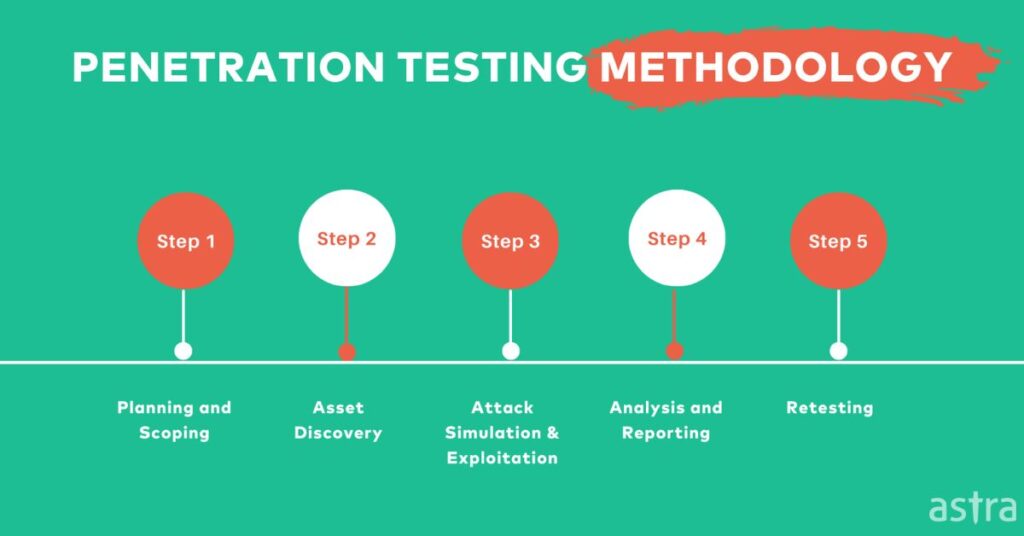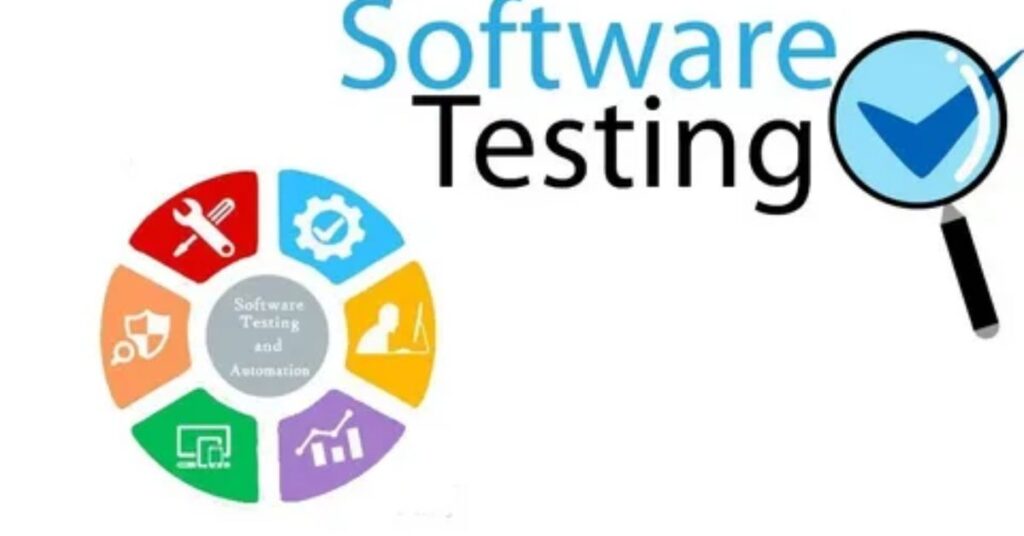“A Complete Guide of What is Testing in ZillExit Software” provides a comprehensive overview of the testing methodologies, tools, best practices, and integration strategies employed at ZillExit Software. It aims to elucidate the systematic approach to software testing within the company, ensuring quality, reliability, and seamless integration of software solutions.
“In the fast-paced world of software development, understanding the intricacies of testing is crucial. Dive into the comprehensive guide on testing methodologies, tools, and best practices at ZillExit Software to unlock the secrets behind ensuring robust, high-quality software solutions.”
ZillExit Software is a renowned company known for its robust solutions tailored to various business needs. Specializing in creating software that meets specific client requirements, ZillExit ensures seamless integration and data-driven insights, enhancing productivity in today’s technology-driven landscape.
What is ZillExit?

ZillExit is a leading software solutions provider renowned for its expertise in developing tailored applications that meet specific business requirements across various industries. Specializing in creating robust, scalable software, ZillExit ensures that its solutions not only address immediate needs but also align with long-term strategic objectives. By integrating cutting-edge technologies and industry best practices, ZillExit enhances operational efficiency and accelerates digital transformation for its clients.
With a focus on innovation and user-centric design, ZillExit strives to deliver intuitive software solutions that streamline processes and improve productivity. Whether developing enterprise-level systems or custom applications, ZillExit emphasizes quality assurance and rigorous testing to ensure that each software product meets stringent performance and reliability standards. As a trusted partner in software development, ZillExit combines technical expertise with a deep understanding of client challenges to deliver solutions that drive business growth and competitiveness in today’s dynamic marketplace.
Understanding Software Testing
Understanding Software Testing is crucial in ensuring the reliability, functionality, and security of software products before they are deployed. It involves a systematic evaluation process to identify defects, validate functionality, and verify that the software meets specified requirements. This process is essential throughout the software development lifecycle, from initial design to final deployment and maintenance.
Software testing encompasses various methodologies and techniques to detect bugs and errors, ensuring that the software operates as intended. It involves both manual and automated testing approaches, each serving distinct purposes in identifying flaws and validating performance. By conducting thorough testing, developers can mitigate risks, enhance user experience, and deliver high-quality software solutions that meet customer expectations and business objectives.
Read Also This: A Guide to Creating Professional Designs with Envato, Grammarly, and Canva Package
Why is Testing Important?
Testing plays a crucial role in software development for several reasons:
Quality Assurance: Ensures the software meets quality standards and is free from defects.
Risk Management: Identifies potential issues early in the development cycle, reducing risks during deployment.
User Satisfaction: Ensures the software meets user expectations and delivers a seamless experience.
Cost Efficiency: Detects and fixes defects early, reducing the cost of fixing issues post-deployment.
Fundamental Testing Principles
Several fundamental principles guide testing at ZillExit Software:
- Testing Shows Presence of Defects: Testing reveals the presence of defects but cannot guarantee bug-free software.
- Early Testing: Testing early in the development lifecycle is more cost-effective in identifying and resolving defects.
- Lifecycle Testing: Testing should be integrated at every stage of the software development lifecycle to ensure comprehensive coverage.
What are The Testing Methodologies?

The testing methodologies refer to systematic approaches and frameworks used to conduct software testing throughout the development lifecycle. Here are three commonly used testing methodologies:
Agile Testing
Agile Testing is integrated throughout the lifecycle of the project, meaning that testing starts from day one and is implemented continuously throughout. This methodology aligns with the principles of Agile software development, which emphasizes flexibility, team collaboration, and customer satisfaction. It encourages a decentralized decision-making process, which enhances team productivity and accelerates the development process. The primary advantage of Agile testing is its iterative process where testing plans develop as the project evolves, ensuring any changes in client requirements are promptly addressed.
Waterfall Testing
Waterfall Testing follows a sequential design process, often used in traditional software development processes, where progress flows steadily downwards like a waterfall through the phases of conception, initiation, analysis, design, construction, testing, and maintenance. This testing methodology is structured and rigid, best suited for projects with clear objectives and stable requirements. The testing phase in the Waterfall methodology comes late in the project lifecycle, which means any changes required after the testing phase can be costly and time-consuming. This method is often critiqued for its inflexibility but praised for its straightforward, disciplined approach.
DevOps Testing
DevOps Testing is a cross-disciplinary practice that emphasizes the integration of development and operations teams, aiming to automate all processes that stand between software development and IT operations. It integrates testing into every phase of the development process, from integration, testing, and release to deployment, and infrastructure management. The key benefits of DevOps Testing include shorter development cycles, increased deployment frequency, and more dependable releases in close alignment with business objectives.
These methodologies provide structured frameworks for testing software applications, each with its own strengths and suitability depending on project requirements and organizational preferences.
Read Also This: 5 Exciting Game Modes in The MeshGamecom You Shouldn’t Miss
Types of Testing in ZillExit Software
ZillExit Software conducts various types of testing to ensure comprehensive coverage and robust software performance:
Unit Testing
Unit testing validates individual components or units of software to ensure they function as intended. It helps in identifying bugs early in the development phase, ensuring each unit performs correctly before integration.
Integration Testing
Integration testing verifies the interaction between integrated units or modules to ensure they work together seamlessly. It validates data communication and interface dependencies, ensuring integrated software components function as expected.
System Testing
System testing evaluates the entire integrated system to validate its compliance with specified requirements. It tests the system’s functionality, performance, and behavior under various conditions to ensure it meets user expectations.
Acceptance Testing
Acceptance testing, or User Acceptance Testing (UAT), validates whether the software meets user requirements and business needs. It is the final testing phase before deployment, ensuring the software functions flawlessly in real-world scenarios.
Common Tools and Environments Used in Testing at ZillExit Software

At ZillExit Software, a robust suite of tools and environments supports comprehensive testing throughout the software development lifecycle, ensuring high-quality deliverables and seamless user experiences. Here’s an overview of the common tools and environments utilized:
Automated Testing Tools:
ZillExit leverages sophisticated automated testing tools like Selenium and Jenkins to streamline testing processes. Selenium facilitates efficient web application testing across multiple browsers, ensuring consistent functionality and compatibility. Jenkins automates build, test, and deployment tasks, enabling continuous integration and rapid feedback cycles for developers. These tools enhance efficiency and accuracy, allowing ZillExit to deliver reliable software products to its customers.
Manual Testing Tools:
For hands-on validation and user experience testing, ZillExit employs tools like Bugzilla and TestLink. Bugzilla serves as a centralized bug tracking system, enabling efficient issue management and resolution across development teams. TestLink supports comprehensive test case management, ensuring thorough test coverage and alignment with project requirements. By combining automated and manual testing approaches, ZillExit ensures robust software quality assurance processes that meet stringent quality standards.
Environments Used in Testing at ZillExit Software
Development and Testing Environments:
ZillExit maintains dedicated development and testing environments to facilitate collaborative development and rigorous testing. The development environment allows developers to integrate and test code changes in a controlled setting before progressing to higher testing stages. The testing environment replicates production conditions closely, enabling thorough validation of software functionality and performance before deployment. This staged approach minimizes risks and ensures that software meets performance expectations and user requirements.
Performance and Security Testing Environments:
To address performance and security concerns, ZillExit utilizes specialized tools like LoadRunner and Burp Suite. LoadRunner simulates user behavior and measures system performance under varying loads, identifying performance bottlenecks and optimizing application performance. Burp Suite assists in detecting and mitigating security vulnerabilities by intercepting and analyzing web traffic, ensuring robust data protection and compliance with security standards. These environments play a crucial role in safeguarding software integrity and reliability, enhancing user trust and satisfaction with ZillExit products.
By leveraging a comprehensive array of testing tools and environments, ZillExit Software upholds its commitment to delivering high-quality software solutions that meet the evolving needs of its customers. These practices ensure that every software release undergoes rigorous testing and validation, contributing to superior performance, security, and user experience.
Automated Testing Tools
Selenium: Automates web application testing across multiple browsers, enhancing test efficiency and coverage.
Jenkins: Automates build, test, and deployment processes, facilitating continuous integration and delivery.
JUnit and TestNG: Frameworks for automated unit testing in Java, ensuring efficient and reliable test execution.
Manual Testing Tools
Bugzilla: Web-based bug tracking tool for managing and tracking software defects throughout the testing process.
Mantis Bug Tracker: Open-source bug tracking system for efficient issue tracking and resolution.
TestLink: Web-based test management tool for organizing and managing test cases and test plans.
Testing Environments
- Local Environment: Developer’s environment for unit testing and initial integration testing.
- Development Environment: Shared environment for integration testing and collaborative development.
- Testing/Staging Environment: Mimics production environment for final testing before deployment.
- Production Environment: Live environment where the software is used by end-users.
Performance and Security Testing Tools
LoadRunner: Measures system performance under load, ensuring software scalability and reliability.
Burp Suite: Web application security testing tool for identifying and addressing security vulnerabilities.
Wireshark: Network protocol analyzer for troubleshooting and analyzing network traffic, ensuring robust network security.
Best Practices in Software Testing at ZillExit Software

ZillExit Software, adhering to best practices in software testing is paramount to ensuring the delivery of high-quality, reliable, and secure software solutions. Here are some key best practices implemented:
Develop a Comprehensive Test Strategy
Effective testing begins with a well-defined test strategy that aligns with project goals and objectives. ZillExit formulates a comprehensive test strategy that outlines testing scope, objectives, timelines, resources, and methodologies. This strategy serves as a roadmap for the entire testing process, ensuring consistency and clarity in testing efforts across development teams.
Employ Continuous Testing and Integration
ZillExit integrates testing seamlessly into the software development lifecycle through continuous testing and integration practices. Continuous integration (CI) pipelines automate the build, test, and deployment processes, enabling frequent code integration and immediate feedback on code quality and functionality. Continuous testing ensures that each code change undergoes rigorous testing, reducing the risk of defects and improving overall software quality.
Prioritize Testing Based on Risk
Understanding the criticality of different software components, ZillExit prioritizes testing efforts based on risk assessment. High-risk areas receive more extensive testing coverage to mitigate potential impact on software performance, functionality, and user experience. By prioritizing testing based on risk, ZillExit optimizes testing resources and focuses on areas that have the greatest potential impact on software quality and stability.
Implement Different Types of Testing
ZillExit employs a diverse range of testing types, including unit testing, integration testing, system testing, and acceptance testing, to ensure comprehensive test coverage. Unit testing verifies individual software components or modules for correctness and functionality, while integration testing validates interactions between integrated components. System testing evaluates the entire system’s functionality and performance, ensuring that it meets specified requirements. Acceptance testing validates software against user expectations and business requirements, ensuring alignment with end-user needs.
Ensure Test Environment Mimics Production
ZillExit maintains test environments that closely resemble the production environment to accurately simulate real-world conditions. This practice ensures that software behaves consistently across different environments and minimizes deployment-related issues. By replicating production conditions, ZillExit verifies software performance, scalability, and reliability under actual usage scenarios, enhancing confidence in software readiness for deployment.
Practice Effective Test Data Management
Effective test data management is critical to conducting meaningful and reliable tests. ZillExit ensures that test data is relevant, accurate, and representative of production data to simulate realistic usage scenarios. By managing test data securely and efficiently, ZillExit safeguards data integrity and compliance with data privacy regulations, enhancing overall testing effectiveness and reliability.
Regularly Update Testing Skills and Tools:
ZillExit emphasizes continuous learning and professional development for its testing teams. Regular training sessions and workshops equip testers with updated knowledge, skills, and tools essential for effective testing practices. By staying abreast of emerging trends, technologies, and methodologies in software testing, ZillExit enhances testing proficiency, efficiency, and innovation in delivering high-quality software solutions.
By adhering to these best practices, ZillExit Software ensures rigorous testing processes that enhance software quality, reliability, and user satisfaction. These practices contribute to delivering software solutions that meet or exceed customer expectations while maintaining industry standards and compliance requirements.
Conclusion:
Testing in zillexit Software is integral to ensuring software quality, reliability, and performance. By following rigorous testing methodologies, utilizing appropriate testing tools and environments, and adhering to best practices, zillexit delivers high-quality software solutions that meet client expectations and user needs. The integration of zillexit into development environments enhances efficiency, improves software quality, and reduces costs, making it a valuable asset in today’s competitive software development landscape.
Frequently Asked Questions
What is the importance of testing in ZillExit Software?
Testing plays a pivotal role in ZillExit Software by ensuring that all products meet high standards of quality, reliability, and user satisfaction. It helps identify and rectify issues early in the development cycle, saving time and costs associated with post-release fixes.
What testing methodologies does ZillExit Software employ?
ZillExit Software utilizes various testing methodologies such as Agile Testing, Waterfall Testing, and DevOps Testing. Each methodology is chosen based on project requirements to ensure efficient and effective software development and testing processes.
How does ZillExit Software ensure the security of its testing environments?
ZillExit Software prioritizes security in its testing environments by using robust tools and protocols. This includes employing secure networks, encryption methods, and access control measures to safeguard sensitive data and prevent unauthorized access.
What are the benefits of automated testing tools at ZillExit Software?
Automated testing tools used at ZillExit Software, such as Selenium and Jenkins, enhance efficiency by automating repetitive tasks and accelerating the testing process. This leads to faster deployments, improved software quality, and reduced time-to-market for new features.
How does ZillExit Software maintain high-quality standards in testing?
ZillExit Software adheres to best practices in software testing, including continuous testing and integration, risk-based testing, and comprehensive test data management. These practices ensure thorough testing coverage and consistent delivery of high-quality software products.


















